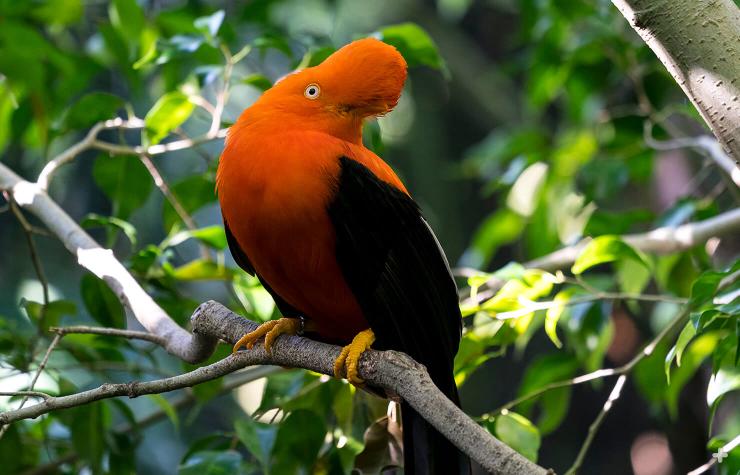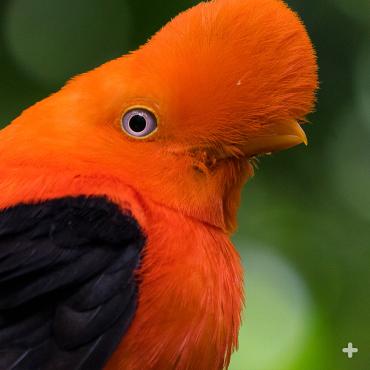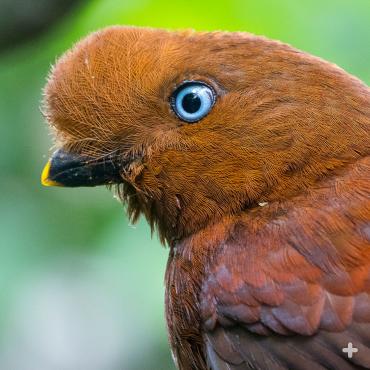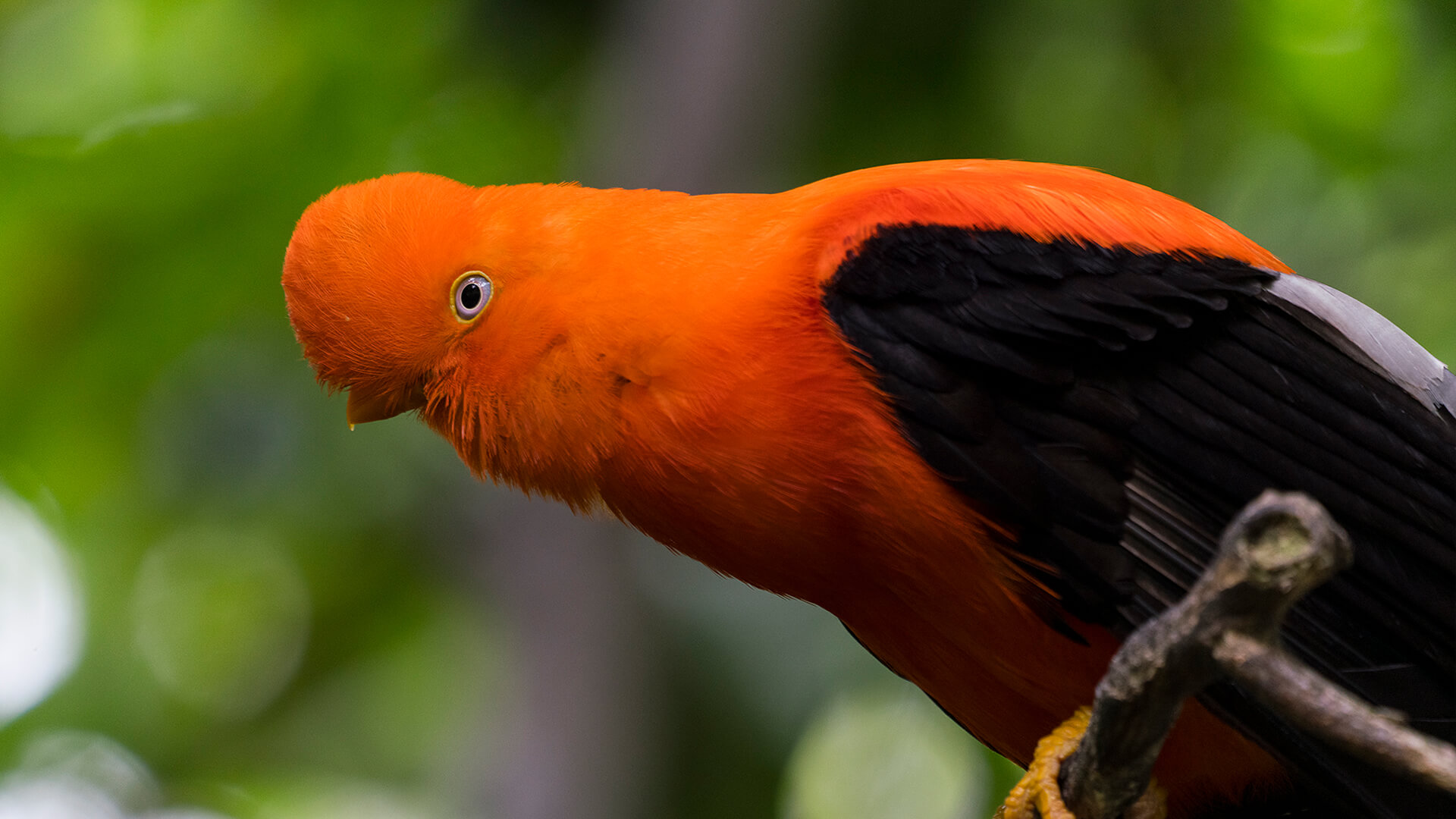
ABOUT
A large fan-like crest almost completely obscures a male cock-of-the-rock’s bill. The crest is formed by two rows of feathers that meet to form a semicircle. A female’s crest is a bit smaller. That’s not the only difference between males and females. In these two species, cock-of-the-rock males are conspicuously brighter than females. Males are mostly intensely orange. In the Andean species, males have gray and black wing feathers and a black tail. Guianan males have orange and black wings and tail, with long fringes on some of the orange feathers. A Guianan male’s crest is edged with a darker border. In contrast, females are chestnut-brown (in Andeans) or smoky-brown with grayish heads (in Guianans).
HABITAT AND DIET
Tropical forests of the Andes Mountains, from Venezuela to Bolivia, are home to the Andean cock-of-the-rock Rupicola peruvianus, which can be found up to about 7,870 feet (2,400 meters). The Guianan cock-of-the-rock Rupicola rupicola lives in humid forests of South America, too, but its distribution is more northerly, including parts of French Guiana, Guyana, Suriname, Venezuela, northern Brazil, and western Colombia. The Guianan species typically inhabits elevations less than 3,940 feet (1,200 meters), although sometimes it can be found as high as 6,560 feet (2,000 meters). Both favor rocky gorges and ravines that border rivers and streams. They pluck fruit from trees, and occasionally eat large insects and small reptiles and frogs.
Males do their best to attract a female mate in a ritualized, community courtship display called a lek— a term that comes from the Swedish word leka, which translates to “play.” But make no mistake, this play is serious. At its heart, a lek is a competition, and the presence of other males heightens natural lek behavior. Only males that are able to attract a female will ever have the chance to mate and pass their genes on to the next generation.
The large, orange birds glare at each other, hunched over with their heads low. One makes the raucous call first—it sounds something like a cross between a rooster’s crow and a pig’s grunt—and another joins in. The boisterous confrontation that follows is a frenzied flurry of wing-flapping, head bobbing, bouncing, bowing, and hopping, and it intensifies as an inquisitive brown female approaches. From time to time, the birds stop. Then they launch into another round.
Males establish and defend their own particular spaces within sight and sound of each other, and that’s where they perform their enthusiastic displays. In the Andean cock-of-the-rock, 15 or more males assemble in the branches, each in his own area, and face off in pairs or small groups. Instead of displaying on perches, Guianan males—as many as 50 of them—establish their own courts on the ground. Each male maintains and defends a post in low branches overhead, and upon the arrival of a female, they all flap down to their courts, crouch, and spread their brilliant, frilly plumage—each trying to make itself more irresistible than its neighbors.
Meanwhile, back at the cave, a female constructs a nests of mud and palm fibers. She builds her nest in a cave or under an overhang, attached to a vertical rock face. A female may take a month or longer to get her nest exactly how she likes it. Often, she’ll re-use her nest, adding to it each year. Only after her nest is complete does a female select a mate.
The appearance of a female at the lek cues the “dance-off.” After watching, she chooses the mate she likes best, landing behind him to nibble at his feathers or peck his neck. Sometimes, a female has to really work to get the attention of a male. (Males can get so single-minded about their display that they seem to forget why they’re doing it!)
Eventually, the chosen male stops lekking long enough to hop around and mate with the interested female. Then, he goes back to his spirited display—in hopes of attracting another female. Often, he does. Scientists have found that certain males attract more mates than other males do. At least some of their success comes from age and experience, something that starts even before they reach sexual maturity, as young males try to participate in leks, usually at the edges.
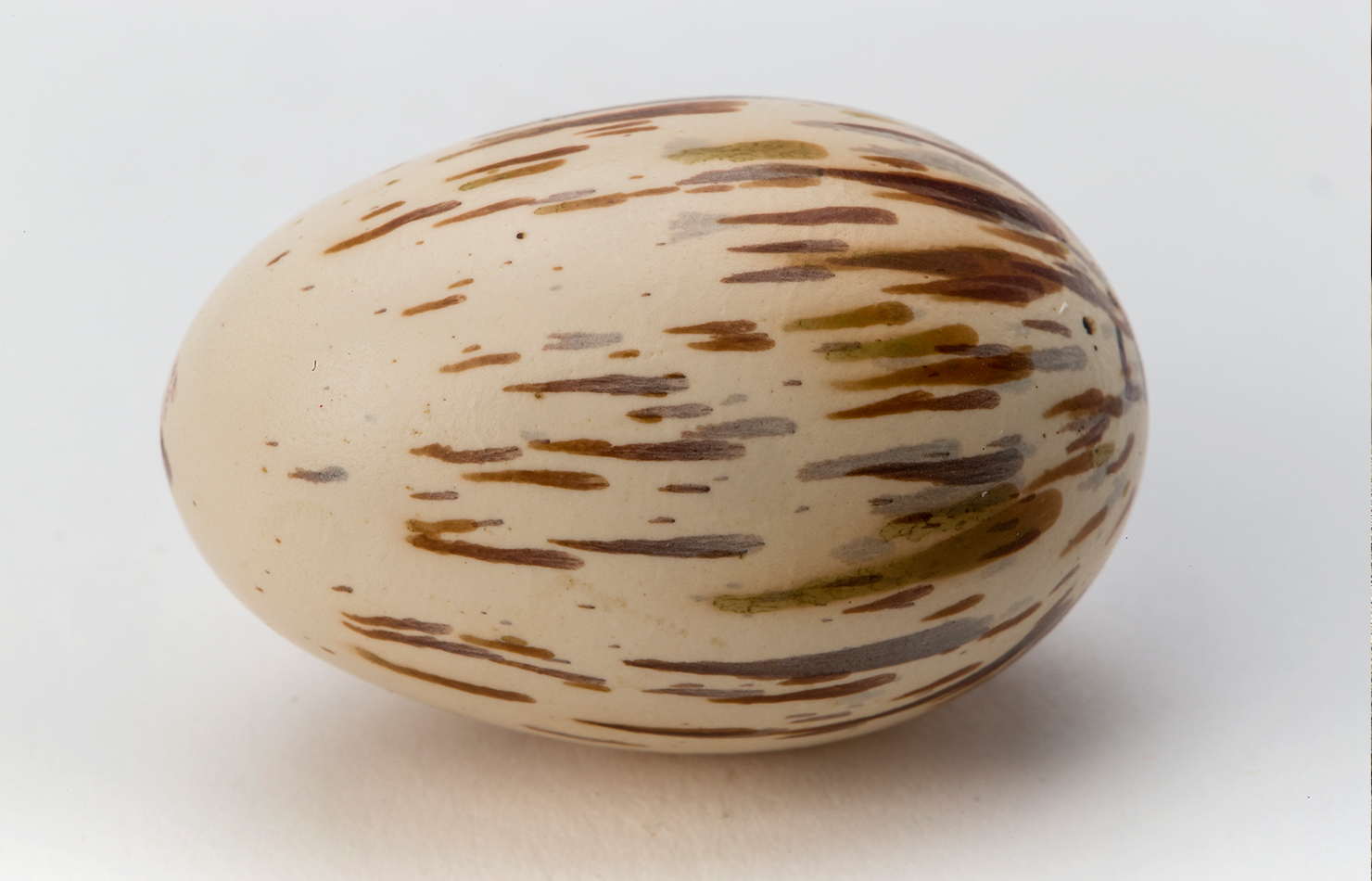
After mating, a female returns to her nest, where she’ll lay one or two eggs and incubate them for about 28 days. Chicks hatch with sparse tufts of downy feathers that grow out in all directions, making them look like mini muppets. They weigh less than 0.8 ounces (24 grams), and they are extremely altricial—that is, they are quite undeveloped when they hatch, and require a parent to feed and care for them for about 45 days. In these birds, only mother birds care for the chicks. In addition to fruit, a mother bird brings her chick insects, tiny reptiles, and little frogs. She feeds prey to her chick whole, pushing it headfirst into the chick’s eager mouth.
